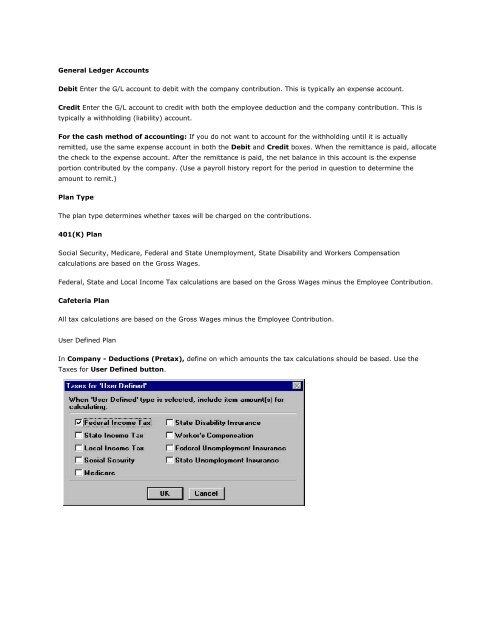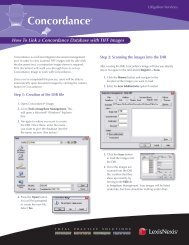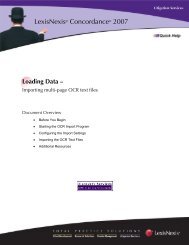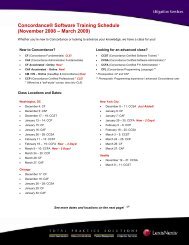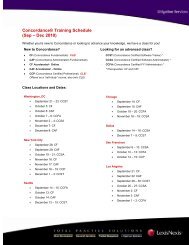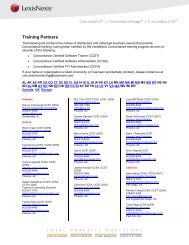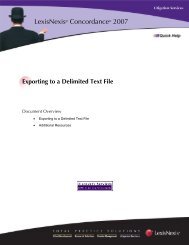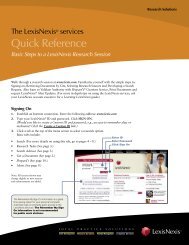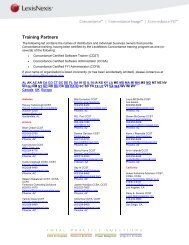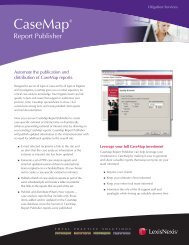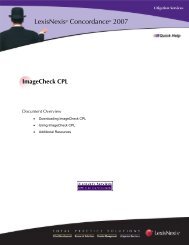Frequently Asked Questions - LexisNexis
Frequently Asked Questions - LexisNexis
Frequently Asked Questions - LexisNexis
You also want an ePaper? Increase the reach of your titles
YUMPU automatically turns print PDFs into web optimized ePapers that Google loves.
General Ledger Accounts<br />
Debit Enter the G/L account to debit with the company contribution. This is typically an expense account.<br />
Credit Enter the G/L account to credit with both the employee deduction and the company contribution. This is<br />
typically a withholding (liability) account.<br />
For the cash method of accounting: If you do not want to account for the withholding until it is actually<br />
remitted, use the same expense account in both the Debit and Credit boxes. When the remittance is paid, allocate<br />
the check to the expense account. After the remittance is paid, the net balance in this account is the expense<br />
portion contributed by the company. (Use a payroll history report for the period in question to determine the<br />
amount to remit.)<br />
Plan Type<br />
The plan type determines whether taxes will be charged on the contributions.<br />
401(K) Plan<br />
Social Security, Medicare, Federal and State Unemployment, State Disability and Workers Compensation<br />
calculations are based on the Gross Wages.<br />
Federal, State and Local Income Tax calculations are based on the Gross Wages minus the Employee Contribution.<br />
Cafeteria Plan<br />
All tax calculations are based on the Gross Wages minus the Employee Contribution.<br />
User Defined Plan<br />
In Company - Deductions (Pretax), define on which amounts the tax calculations should be based. Use the<br />
Taxes for User Defined button.


